Inside an almost unassuming brick building on The Fenway, around the corner from the massive Museum of Fine Arts, hides one of Boston’s greatest treasures. Step inside the Isabella Stewart Gardner Museum and you will find yourself literally transported, completely surrounded by medieval and Renaissance art housed in a building that is itself a work of art, fitted throughout with pre-modern spolia enclosing a beautiful courtyard garden.  The Gardner is not a typical museum, with permanent installations carefully crafted by curators and educators for maximum edification; instead, each and every piece of art in the Museum, every painting, tapestry, book, chaise, and sculpture, every Titian, Michelangelo, Raphael, and Botticelli, sits exactly where it was placed by Mrs. Gardner (as she is called by the staff). Even the frames of the paintings famously stolen in 1990 remain on the walls, as a testament not only to the missing artwork but to Mrs. Gardner’s wishes. When you walk through the galleries, you are experiencing not only the art but the collector’s hand and vision. Contextualizing and explanatory labels are printed on detached gallery cards instead of posted on the walls, lest they interfere with the installations. Experiencing Isabella Stewart Gardner’s art as she wanted it to be experienced is both intimate and expansive.
The Gardner is not a typical museum, with permanent installations carefully crafted by curators and educators for maximum edification; instead, each and every piece of art in the Museum, every painting, tapestry, book, chaise, and sculpture, every Titian, Michelangelo, Raphael, and Botticelli, sits exactly where it was placed by Mrs. Gardner (as she is called by the staff). Even the frames of the paintings famously stolen in 1990 remain on the walls, as a testament not only to the missing artwork but to Mrs. Gardner’s wishes. When you walk through the galleries, you are experiencing not only the art but the collector’s hand and vision. Contextualizing and explanatory labels are printed on detached gallery cards instead of posted on the walls, lest they interfere with the installations. Experiencing Isabella Stewart Gardner’s art as she wanted it to be experienced is both intimate and expansive.
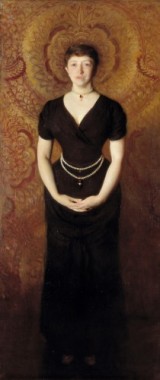
Portrait of Isabella Stewart Gardner (John Singer Sargent, 1856-1925) (1888), Isabella Stewart Gardner Museum
Isabella Stewart Gardner (1840-1924) was an extraordinary connoisseur who stood at the center of Boston’s cultural life in the late nineteenth and early twentieth century. She was a patron and friend to several important artists, including John Singer Sargent (whose famed portrait of Mrs. Gardner is at the left), and she was an important collector of art, early printing, and illuminated manuscripts. Anne-Marie Eze, former Associate Curator of the Collection, writes that “the manuscripts are the hidden treasures of the museum and will shed new light on the history of the art of illumination as well as Gardner’s tastes in art” (personal correspondence). Eze has been researching and lecturing to the public about the book collection since 2010 and recently published this article about the Museum’s Italian manuscripts. She is one of the principal curators of the 2016 Pages from the Past exhibit for which the Gardner Museum will serve as both a lender and a venue, and I thank her for her contributions to this post.
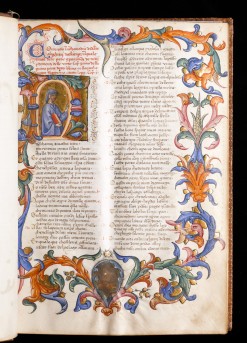
Dante Aligheiri, La chomedia di Dante Alighieri da Firenze, around 1410-1420, f.7 (Isabella Stewart Gardner Museum, Boston)
The 1906 catalogue includes just a few of the manuscripts, such as this early fifteenth-century Dante. Mrs. Gardner describes the manuscript as follows: “Dante Alighieri da Firenze/ MS. of the fourteenth century on vellum; finely painted and richly illuminated initials, the first of which contains a miniature portrait of Dante [shown here], another one of Christ blessing, etc. From Lord Guildford’s and the Barrois Collection, [bought] at the Ashburnham sale, June 10, 1901.” (1906 catalogue, p. 21). You may remember the Barrois/Ashburnham sale from my last post; it was at the same sale that Sydney Cockerell purchased twenty-one manuscripts for the Boston Public Library.
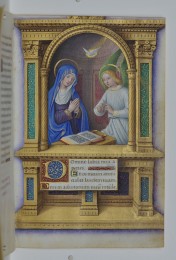
The Annunciation, Jean Bourdichon, Book of Hours, 1490-1515, manuscript, p. 34 (Isabella Stewart Gardner Museum, Boston)
A more professional catalogue was compiled in 1922 by Mrs. Gardner and Morris Carter, a librarian who served as the museum’s first director. Manuscript 6. T. 1, an exquisite and profusely illustrated Book of Hours attributed to the French illuminator Jean Bourdichon (1457 – 1521), is described without attribution on pp. 18-22. “The Bourdichon,” as we’ve come to call it, is a masterpiece of early sixteenth-century painting, showing extraordinary technical skill, masterful trompe l’oeuil, scenic depth, and figural realism. These features are all evident in the Annunciation miniature at the left, as well as the examples below (The Visitation, and the Adoration of the Magi).
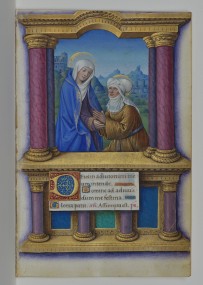
The Visitation, Jean Bourdichon, Book of Hours, 1490-1515, manuscript, p. 46 (Isabella Stewart Gardner Museum, Boston)
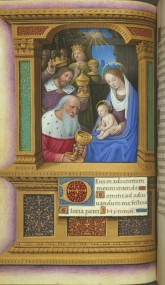
The Adoration of the Magi, Jean Bourdichon, Book of Hours, 1490-1515, manuscript, p. 71 (Isabella Stewart Gardner Museum, Boston)
Even though the manuscripts were included in the de Ricci Census (I:930-936 and II:2297), they were largely unknown until Eze began studying them in 2010. This is in part because they are safely tucked away where Mrs. Gardner shelved them, in cabinet bookcases in the Long Gallery on the third floor, behind heavy velvet curtains that visitors are indeed invited to lift. One exception is the early seventeenth-century Neopolitan Choirbook displayed beneath Sargent’s portrait of Mrs. Gardner in the Gothic Room. In this video about the choirbook, Eze tells how it was given to Mrs. Gardner by her brother-in-law, who claimed that the manuscript had been rescued from a shipwreck off the coast of Naples. In the video, you will also hear Harvard University Professor of Music Tom Kelly sing Gregorian chant directly from the manuscript.


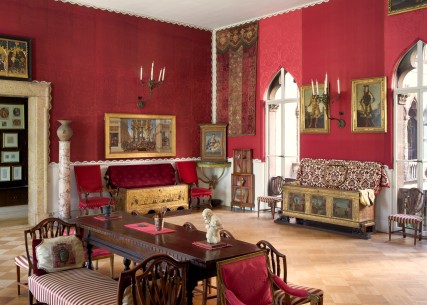
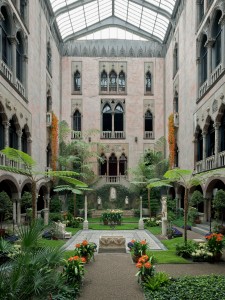
My favorite place in the world! Discovered when I was next door in library school at Simmons, and would go just to sit and read. Inspiration indeed, though at the time I did not know about the manuscripts…a lost opportunity!